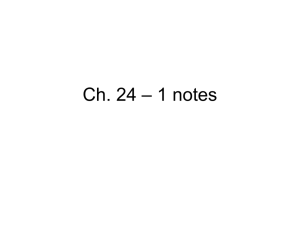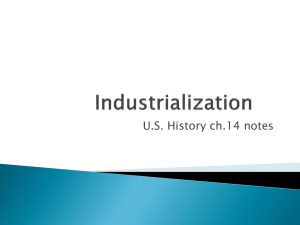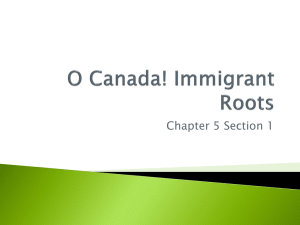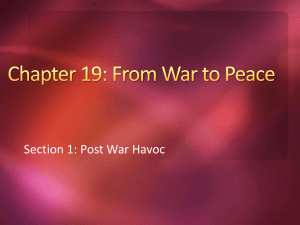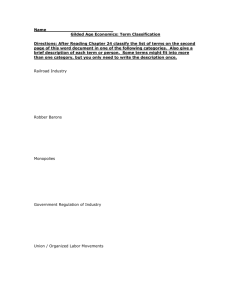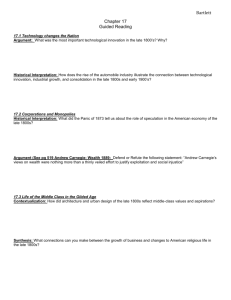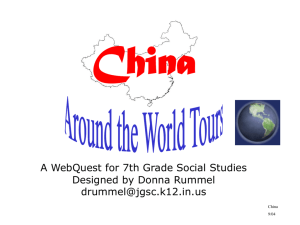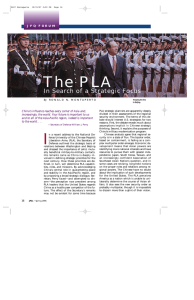8th Grade Social Studies Final Exam
advertisement
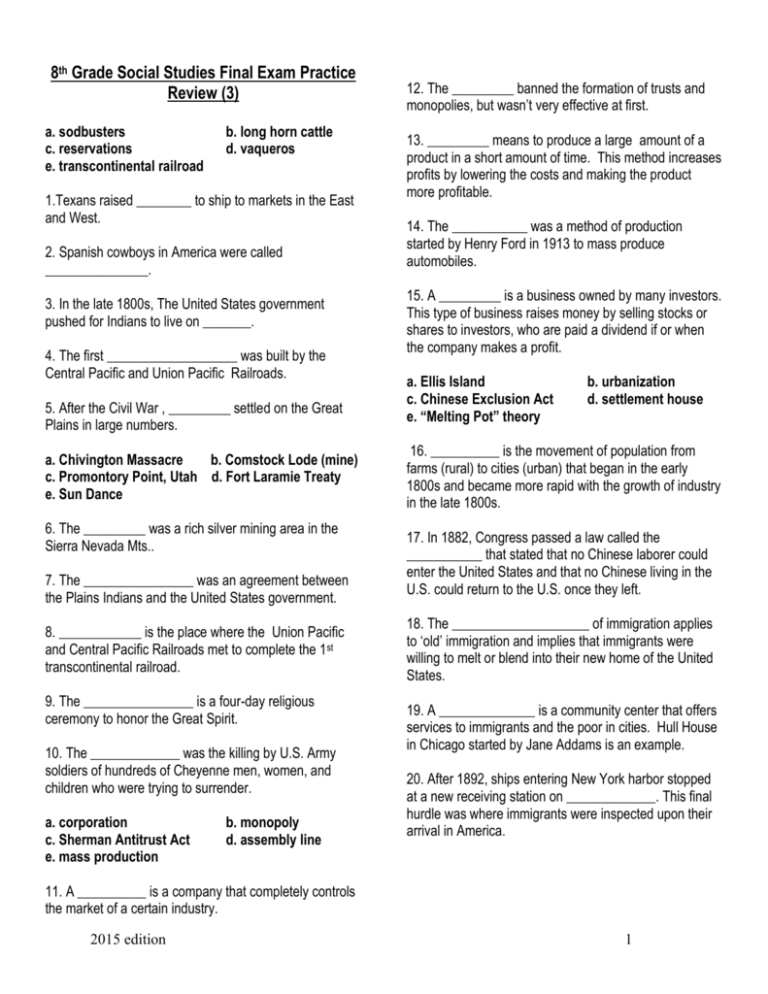
8th Grade Social Studies Final Exam Practice Review (3) a. sodbusters c. reservations e. transcontinental railroad b. long horn cattle d. vaqueros 1.Texans raised ________ to ship to markets in the East and West. 2. Spanish cowboys in America were called _______________. 3. In the late 1800s, The United States government pushed for Indians to live on _______. 4. The first ___________________ was built by the Central Pacific and Union Pacific Railroads. 5. After the Civil War , _________ settled on the Great Plains in large numbers. a. Chivington Massacre b. Comstock Lode (mine) c. Promontory Point, Utah d. Fort Laramie Treaty e. Sun Dance 6. The _________ was a rich silver mining area in the Sierra Nevada Mts.. 7. The ________________ was an agreement between the Plains Indians and the United States government. 8. ____________ is the place where the Union Pacific and Central Pacific Railroads met to complete the 1st transcontinental railroad. 9. The ________________ is a four-day religious ceremony to honor the Great Spirit. 10. The _____________ was the killing by U.S. Army soldiers of hundreds of Cheyenne men, women, and children who were trying to surrender. a. corporation c. Sherman Antitrust Act e. mass production b. monopoly d. assembly line 12. The _________ banned the formation of trusts and monopolies, but wasn’t very effective at first. 13. _________ means to produce a large amount of a product in a short amount of time. This method increases profits by lowering the costs and making the product more profitable. 14. The ___________ was a method of production started by Henry Ford in 1913 to mass produce automobiles. 15. A _________ is a business owned by many investors. This type of business raises money by selling stocks or shares to investors, who are paid a dividend if or when the company makes a profit. a. Ellis Island c. Chinese Exclusion Act e. “Melting Pot” theory b. urbanization d. settlement house 16. __________ is the movement of population from farms (rural) to cities (urban) that began in the early 1800s and became more rapid with the growth of industry in the late 1800s. 17. In 1882, Congress passed a law called the ___________ that stated that no Chinese laborer could enter the United States and that no Chinese living in the U.S. could return to the U.S. once they left. 18. The ____________________ of immigration applies to ‘old’ immigration and implies that immigrants were willing to melt or blend into their new home of the United States. 19. A ______________ is a community center that offers services to immigrants and the poor in cities. Hull House in Chicago started by Jane Addams is an example. 20. After 1892, ships entering New York harbor stopped at a new receiving station on _____________. This final hurdle was where immigrants were inspected upon their arrival in America. 11. A __________ is a company that completely controls the market of a certain industry. 2015 edition 1 a. muckrakers c. suffragists e. Pure Food and Drug Act b. trustbuster d. civil service 21. _________ were reporters who sifted through the dirt and muck to expose corruption during the Progressive Era. 22. People who have to take a test to prove they have the skills needed for the job they want in government belong to the ___________. This replaces the spoils system. 23. The __________ requires manufacturers to list ingredients on packages for consumer safety. 24. When Teddy Roosevelt tried to regulate giant monopolies, he was nicknamed a _____________. 25. Women who campaigned for the right to vote were known as _________________. a. imperialism c. Great White Fleet e. Panama Canal b. isolationism d. Rough Riders 26. The _________ or “Big Ditch” as it was sometimes called, linked the Atlantic and Pacific Oceans through Latin America. 27. Between 1870 and 1914, many nations practiced _______ or the taking of colonies in Africa and Asia. 28. The _________ were a group of American navy ships painted white and sailed around the world to protect American trade and business interests around the world. 29. The _______________ lead by Teddy Roosevelt charged up San Juan Hill in the Spanish American War. 30. Early American Presidents urged the U.S. to follow a policy of ___________ to avoid foreign wars and conflicts. a. Boxer Rebellion b. Monroe Doctrine c. dollar diplomacy d. Seward’s Folly e. sphere of influence 31. The _____________ was an uprising by Chinese Nationalists against foreigners in China. 2015 edition 32. ________was the nickname given to the purchase of Alaska by U.S. Secretary of State William Seward. 33. In China, a _____________ was an area, often around a seaport, where a nation had special trading privileges. 34. The __________told foreign nations to stay out of the Western Hemisphere and that the U.S. would not interfere in European affairs. Policy was started by President James Monroe. 35. President Taft encouraged U.S. businesses to “substitute dollars for bullets.” This foreign policy became known as ___________. a. militarism c. trench warfare e. Selective Service Act b. nationalism d. alliance system 36. _________ is the type of fighting during WW I in which both sides dug trenches protected by mines and barbed wire. 37. The __________ is when nations agree to help protect each other if attacked in time of war. Any crisis for one nation affected the other nations in the alliance. 38. Pride or devotion to one’s country is known as ________________. 39. The policy of building up strong military forces to prepare for war is known as ________________. 40. The ____________ was a law that started a draft to get enough American men to fight in World War I. a. Prohibition b. flappers c. jazz d. Red Scare e. Scopes Trial 41. ___________ was the ban on the manufacture, sale, and transportation of liquor anywhere in the United States. 42. The ________________ involved a biology teacher in Dayton, Ohio who taught evolution in his class. 43. A new type of music that combined West African rhythms, African American work songs, and European harmonies is called __________________. 2 44. Thousands of people considered radicals and some who were not were suspected of being communist and arrested during the ___________________. a. Domino theory c. Vietnam War e. containment 45. The __________ were young women in the 1920s that rebelled against the traditional ways of thinking and acting. 56. The U.S. policy of trying to keep communism from spreading and keep it within existing boundaries is called ______________. a. Stock Market Crash c. deficit spending e. Bonus Army b. Hoovervilles d. ‘forgotten man’ 46. ___________ is when the federal government spends more money than it takes in taxes. b. Iron Curtain d. Cold War 57. The period of tension caused by different ideologies that sometimes got ‘hot’ between the U.S. and the Soviet Union is called the _____________. 47. The ____________ was a nickname given to the everyday American people by FDR during the Depression. 58. The idea that if the U.S. allowed one nation in an area to fall to communism then the other nations in that area may also fall to communism like dominoes is called the _____________________. 48. The ______________ occurred when too many people were trying to sell stocks and almost no one was buying; this was the start of the Great Depression that lasted for 10 years. 59. Prime Minister Winston Churchill of Great Britain used the term _________________ to describe the imaginary dividing line between the countries of Soviet led Eastern Europe and the democratic led Western Europe. 49. The __________ were poor, jobless veterans of WW I that marched on Washington D.C. to demand the bonus payment Congress had promised to pay them (1932). 60. The ___________ was a war fought in Southeast Asia that deeply divided the nation-many thought it a civil war and that the U.S. should not be involved. 50. ___________________ were the places where homeless Americans lived in shacks during the Great Depression and they blamed President Hoover. a. Radical Republicans b. Plessy vs Ferguson c. impeach d. segregation e. 13th, 14th, and 15th amendment a. appeasement c. Holocaust e. Pearl Harbor 61. The ___________________ of blacks and whites in public places took place because of the Jim Crow laws. b. island hopping d. totalitarian state 51. The _______________ is when the Nazis starved, gassed, and burned over 6 million Jews and six million others who did not agree with Nazi ideas. 52. The policy of ________________ means to give into an aggressive nation like Germany. France and Great Britain did this in WW II. 53. A ________________ is when one person or a small group of people controls every part of people’s lives. 54. The Japanese attack at ___________________ was the event that caused the U.S. to declare war on Japan and enter World War II. 55. _______________ was the Allies’ plan to take key islands one by one until they got close enough to bomb Japan. 2015 edition 62. The Civil War amendments or _________________________ abolished slavery, make black males citizens, and gave black males the right to vote. 63. The Radical Republicans wanted to __________________ or bring charges against President Johnson because he would not enforce their plans for Reconstruction. 64. ______________________ is the Supreme Court case that allowed the principle of ‘separate but equal.’ to become the law of the land for the next 50 years and kept blacks and whites separate. 65. ____________________ wanted to treat the South like a conquered nation after the Civil War. . 3
